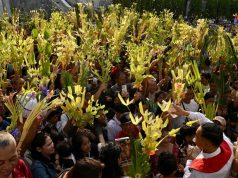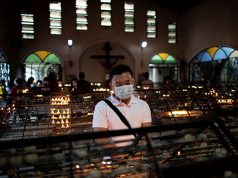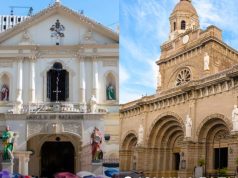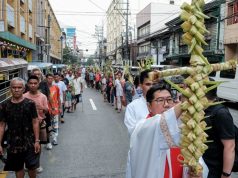
Is culture “almost non-existent” in the Philippines’ capital?
This was what some Filipinos talked about online as the metropolis gets decongested for the Holy Week and the Day of Valor or Araw ng Kagitingan.
Twitter user @itsraygunsea, a marketer and brand builder, shared some of his thoughts about vacationers during the long weekend, specifically on Good Friday.
“Ang lungkot pala talaga ng Manila, ‘no? For some, they’re just here for livelihood. Kaya when they have the opportunity to escape from it, they grab it, kahit temporary lang. Either umuuwi sa hometown or nagba-bakasyon somewhere,” he wrote on April 7.
“Not to mention, almost non-existent ang culture here sa Manila, unlike capital cities ng neighboring countries natin. The likes of Bangkok, Phnom Penh, Taipei, Tokyo, buhay na buhay ang kultura nila sa capital cities pa lang,” @itsraygunsea added, listing the capitals of Thailand, Cambodia, Taiwan, and Japan.
His second tweet about culture caught the local online community’s attention, garnering over 2,000 quote tweets so far.
Some disagreed with the Twitter user and argued that culture still exists in the Philippine capital.
“I think the culture of Manila still exists. Try joining @rebirthmanila tours to see that heritage [or] tourist places in Manila are still alive and pwede pang pasyalan. For sure, magugulat ka na may mga hidden gems ang Manila,” a Twitter user said, tagging the account of Renacimiento Manila, a cultural organization working towards the “culture rebirth of Manila.”
Another online user also mentioned the org in the replies thread of @itsraygunsea’s second tweet.
“Perhaps you’d like to join a walking tour of Escolta? Joined one last month. [‘Twas] pretty eye-opening, cc @rebirthmanila,” the Twitter user commented with a smiling emoticon.
Others also took note of what they believed were underlying concerns about enjoying Manila culture.
“Everyone is going after the ‘culture in Manila is non-existent’ tweet. Understandably, may rub people to wrong way, but fr [for real]: Enjoying culture in Manila is inaccessible. Heritage preservation is terrible. Green spaces are edged out. You must sit in traffic to catch a play in CCP [Cultural Center of the Philippines],” journalist Regine Cabato wrote.
“Unless foreign friends are history buffs who’ll love Intramuros, I often advise to cut Manila time short and enjoy the islands. Capital region is not kind to the unanointed. It’s unwalkable, no clear commute routes unless you book tours or hail cabs that can be upward $10 a ride,” she added.
“Not to mention airport transport is also terrible. That said, there are still many hidden gems and excellent restaurants and fun things to do in Manila, but they must be sought out. Best to have a local friend guide you and help you navigate,” Cabato continued.
Manuel Quezon III also mentioned that the country has a “mall culture” in response to a Twitter user who shared an observation that shopping malls are “everywhere.”
“Sure they bring jobs, but those jobs are mostly contractual. [PH] is now one big shopping mall of a country. What [and] where is the culture in that??” the online user commented.
A yoga teacher argued that culture “comes from the people who live it.”
“When he said ‘culture’, he probably meant culture as seen from an orientalist lens, something sanitized and commodified for the Western tourist. Kumbaga sa noodles, instant ramen, cup noodles, ready-to-eat, just add water. Well, sadyang ‘di ganon ang Maynila,” Ben Bernabe wrote.
“If Manila culture were noodles, it’s a g**dam bilao of pancit palabok. It’s a whole damn feast. Take the whole bilao, unpack it, mix it up, dig in. You might find things you don’t like, but it’s part of the experience. More than places, culture comes from the people who live it,” he added.
“I’m sure the same is true with many capital cities the world over. It’s really a matter of perspective. Don’t look for culture in places, sites, and things. Seek it out from the people in the places you visit. That’s where culture emerges. It’s the people who produce the culture,” Bernabe further said.
Two days later, Twitter user @itsraygunsea clarified his take by saying that he was tweeting it “from a tourist or traveler point-of-view.”
“We visit capital cities ng ibang bansa to experience their culture [versus] Manila na nagiging transit lang papunta sa famous travel destinations,” he wrote on April 9.
“Context: Born and raised ako here sa NCR [National Capital Region]. My work requires me to travel din all over the country — NCR included. I’ve been to several countries na rin. I said it out of hinayang kasi almost (if not all) flights sa buong Pilipinas, dumadaan sa NAIA,” user @itsraygunsea added, referring to the Ninoy Aquino International Airport, the main gateway to the country.
“Imagine if we encourage these tourists to stop and ‘experience Manila culture’ (and by Manila, I meant NCR). Ang laking market non! Admittedly, though, very wrong ako when I said ‘almost non-existent ang culture sa Manila’. My bad. I could’ve worded it better. Sorry na,” he continued.
What is culture?
A webpage from Oxford Bibliographies defines “culture” as the “symbolic-expressive dimension of social life.”
“In common usage, the term ‘culture’ can mean the cultivation associated with ‘civilized’ habits of mind, the creative products associated with the arts, or the entire way of life associated with a group,” it added.
“Among sociologists, ‘culture’ just as often refers to the beliefs that people hold about reality, the norms that guide their behavior, the values that orient their moral commitments, or the symbols through which these beliefs, norms, and values are communicated,” the entry continued.









